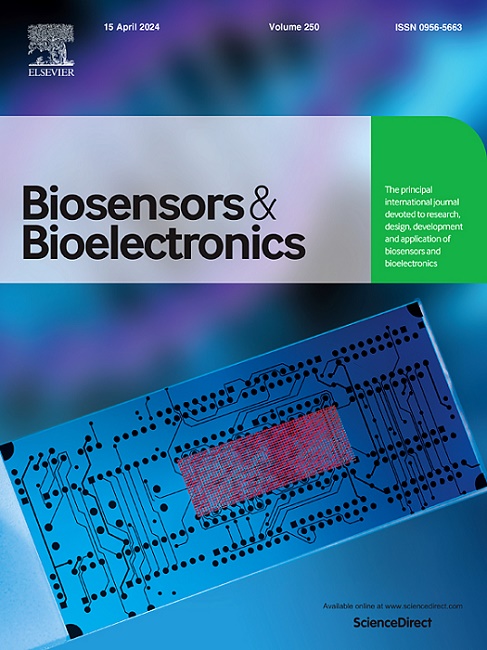A bioinspired microbial taste chip with artificial intelligence-enabled high selectivity and ultra-short response time
IF 10.7
1区 生物学
Q1 BIOPHYSICS
引用次数: 0
Abstract
Real-time water pollution monitoring is crucial as global water pollution has become an urgent issue endangering the health of humanity. Microbial taste chips are promising for water pollution monitoring due to the advantages of short response time and real-time monitoring capability. However, although more than 200 journal research articles on microbial taste chips have been reported to date, sensor selectivity, which is the foremost critical parameter, remains an unsolved challenge even after utilizing gene-editing techniques. In addition, the response time is long and takes at least 3 min. Herein, we report a breakthrough to solve the selectivity challenge by a bioinspired wireless microfluidic microbial taste chip with artificial-intelligence(AI)-enabled high selectivity. Utilizing gated recurrent unit(GRU)-based deep learning algorithms, we demonstrate a classification accuracy of 98.9% for Cu2+, Pb2+, and Cr6+ by harnessing the different temporal output current patterns of the chips to different pollutants. A shortest 48-s response time is achieved, 3.75 times shorter than the fastest previously reported counterpart. The chip enables real-time sensing of Cu2+, Pb2+, and Cr6+ with high accuracy and linearity. Combined with a small footprint and wireless connectivity, the chip may find applications in real-time quantitative heavy metal ions in water monitoring and contribute to global efforts in fighting water pollution.
求助全文
约1分钟内获得全文
求助全文
来源期刊

Biosensors and Bioelectronics
工程技术-电化学
CiteScore
20.80
自引率
7.10%
发文量
1006
审稿时长
29 days
期刊介绍:
Biosensors & Bioelectronics, along with its open access companion journal Biosensors & Bioelectronics: X, is the leading international publication in the field of biosensors and bioelectronics. It covers research, design, development, and application of biosensors, which are analytical devices incorporating biological materials with physicochemical transducers. These devices, including sensors, DNA chips, electronic noses, and lab-on-a-chip, produce digital signals proportional to specific analytes. Examples include immunosensors and enzyme-based biosensors, applied in various fields such as medicine, environmental monitoring, and food industry. The journal also focuses on molecular and supramolecular structures for enhancing device performance.
 求助内容:
求助内容: 应助结果提醒方式:
应助结果提醒方式:


